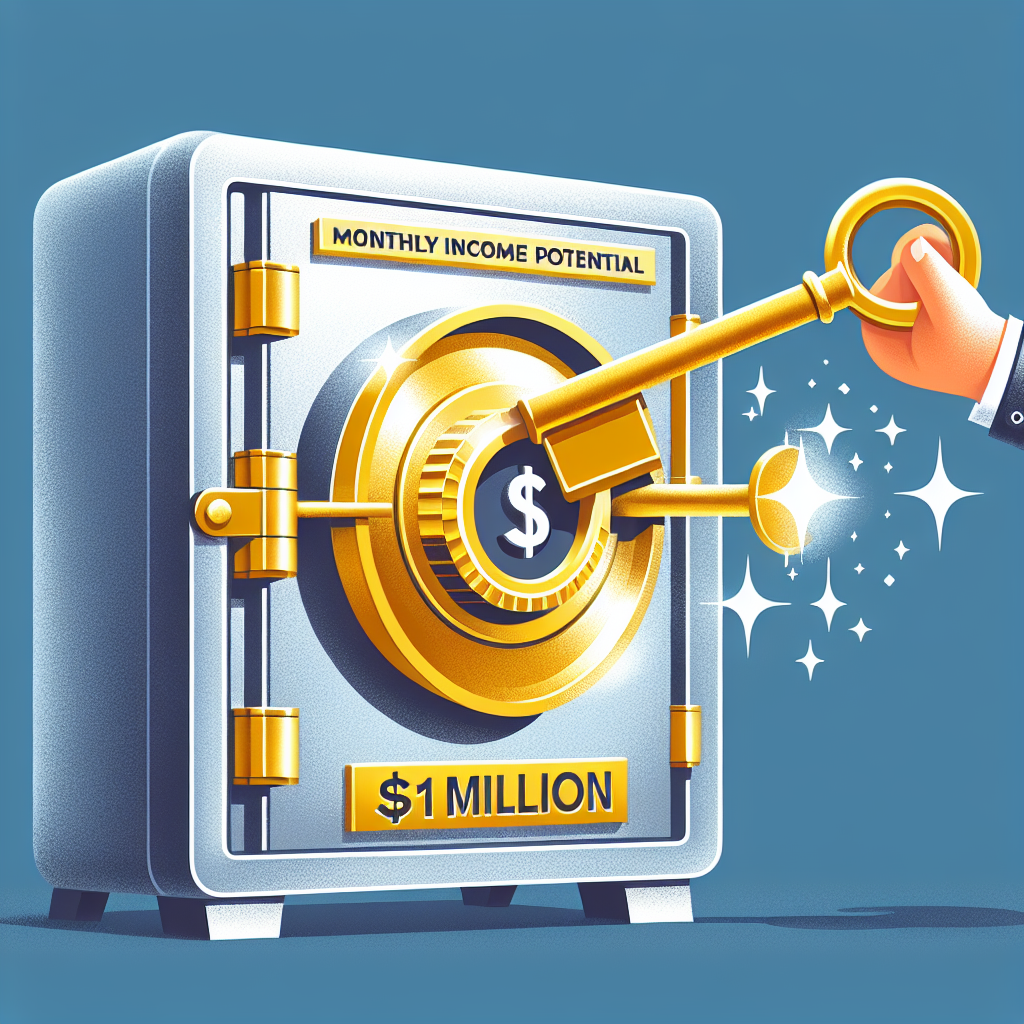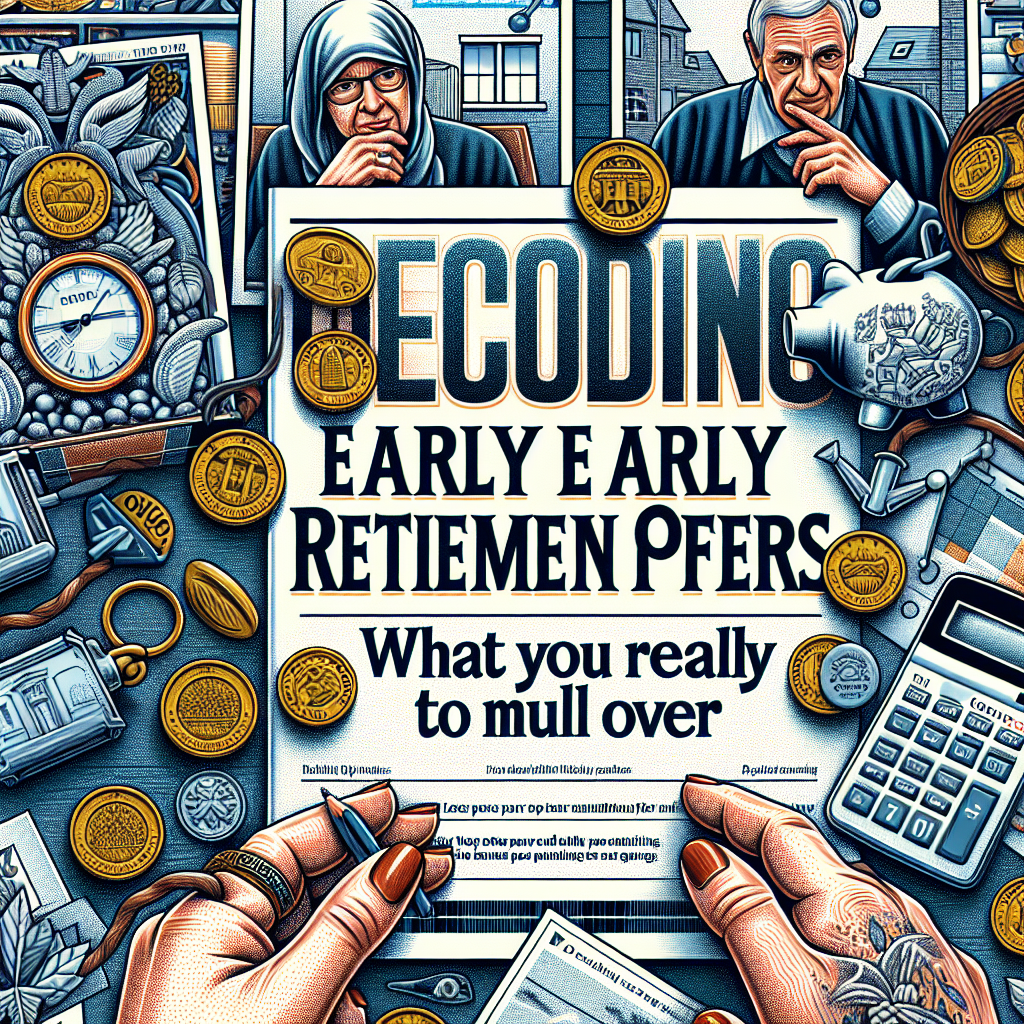
Mastering Every Quarter: A Fresh Look at Chase Freedom Flex’s Q4 Bonus Bonanza
The fourth quarter of 2024 introduces a quirky lineup of bonus categories: PayPal, McDonald’s, a handful of charities, pet stores, and veterinary services. From October 1 through December 31, cardholders can snag an extra 4% cash back on up to $1,500 spent across these sectors.
Remember, activation is a must, and once the $1,500 cap is hit, the rewards revert to the usual rates — 1% on most purchases and 3% on dining. This means that PayPal transactions, contributions to select charities, as well as spending in pet shops and vet clinics will yield 5% cash back. Meanwhile, purchases at McDonald’s will rake in 7%, up to that quarterly cap.
Strategizing the Q4 Bonus: My Game Plan
For my household, PayPal stands out as the top contender. It fits perfectly with our holiday shopping spree and everyday expenses. A major anticipated expense is airline tickets for a family getaway in February. Since many airlines accept PayPal, booking during Q4 could easily consume much of the $1,500 limit. Simply by leveraging PayPal, maxing out this category over three months seems well within reach.
Though pet ownership eludes us, the pet-related categories — including pet stores and veterinary services — offer a curious twist. Cards like this are rare; one notable exception is a card that hands out unlimited 4% back on an eclectic mix of self-care, eco-friendly products, plus sports and entertainment. This card’s inclusion of pet supplies and food resonates with a niche but dedicated crowd. Could it be that Freedom Flex’s category architects noticed this trend?
Charitable Giving Shines in Q4
Charitable donations, spotlighted from October through December, are a rare bird among credit card bonus categories. Given that giving tends to crescendo at year’s end, this well-timed focus echoes last year’s Q4 lineup for the Freedom Flex, reinforcing a thoughtful nod to generosity.
Noteworthy charities qualify for this bonus, such as:
- American Red Cross
- Equal Justice Initiative
- Feeding America
- Habitat for Humanity
- International Medical Corps
- International Rescue Committee
- Leadership Conference Education Fund
- NAACP Legal Defense and Educational Fund
- National Urban League
- Thurgood Marshall College Fund
- United Negro College Fund
- UNICEF USA
- United Way
- World Central Kitchen
- GLSEN
- Out and Equal
- Sage
McDonald’s: An Unexpected Wildcard
Including McDonald’s might raise eyebrows; after all, it would take a hefty number of Big Macs to reach the $1,500 quarterly threshold. But for those who frequent the Golden Arches, this could be a win. Or, it might just serve as a handy stopgap if the other categories don’t push you to the limit.
My 2024 Quest with Freedom Flex: Can I Nail All Four Quarters?
In pursuit of the perfect year, I aced the Q1 5% categories — mainly groceries for me, but also fitness memberships and spa services fit the bill. Q2 saw me hitting the ceiling again, thanks to Amazon orders, dining out, and hotel bookings through Chase Travel. Q3 rewarded spending on live entertainment, theaters, and EV charging stations, with live entertainment being the MVP for my tally.
Since 2011, this card has been my ally, but a full four-quarter max-out has remained elusive—until perhaps this year. Chase’s recent expansion from single-category quarterly bonuses to three or even four categories per quarter has been a game-changer.
Household growth — doubling from two to four members — and creeping inflation have naturally boosted spending. Interestingly, the $1,500 quarterly limit has stood firm since I first signed up, though its value has shifted over time. For context, $1,500 in 2011 roughly equals $2,100 today, reflecting inflation’s bite. Using portals like (the online shopping site offering extra cash back after clicking through to participating merchants) has been a sweet bonus, saving me nearly $300 once on an Apple Watch fix.
Already, I’ve circled October 1 on my calendar to switch my PayPal payments over to the Freedom Flex card. Here’s to squeezing every last drop of value out of this final quarter’s perks.
Need a Hand with Credit Cards?
If you have questions or want to talk shop about credit cards, feel free to reach out. I’m always glad to share insights and lend a hand.
*The details regarding the Chase Freedom Flex® and Wells Fargo Attune℠ Card were gathered independently by Bankrate. The issuing banks have not reviewed or endorsed this information.

Unlocking Success: Why a Dedicated Business Checking Account is a Game Changer
Most entrepreneurs, as a rule rather than exception, keep a dedicated business bank account distinct from their personal one. This tactic packs several advantages, notably shielding your assets if you run a C corporation, S corporation, or LLC. Freelancers, solopreneurs, and small business proprietors alike reap numerous perks by segregating personal and business finances — here are the five key benefits that stand out.
1. Slash Tax-Time Stress
Tackling business taxes is a notorious headache for small business operators. Few relish the tedious task of combing through receipts and paperwork, so anything that can ease the tax burden is worth embracing.
Trying to pinpoint your company’s income and expenditures becomes a soul-crusher if you funnel business transactions through your personal account. The result? Sifting through countless charges to fish out what truly belongs to your business.
- Meals and client entertainment expenses
- Office gear and supplies
- Travel costs like fuel, flights, accommodations, and rentals
- Professional services including legal fees or virtual assistance
- Educational pursuits such as courses and books
Missing these deductions can inflate your tax bill. Even worse, mixing personal and business expenditures might trigger IRS audits, leading to back taxes, penalties, and interest payments.
Keeping your personal and entrepreneurial funds distinct not only simplifies bookkeeping but also smooths the path come tax season — less guesswork, fewer errors, and clearer financial visibility.
2. Boost Your Chances of Securing Business Loans
Lenders often look for a business bank account when assessing loan applications. Firms that keep their accounts blended with personal finances frequently face hurdles qualifying for credit.
Take it from experts like those at New Money, New Problems in Tennessee: when business deposits land in your personal bank book, lenders struggle to separate household cash flow from business revenue. This opacity dims your chances of landing financing.
Government-supported loans, such as SBA loans, are particularly inclined toward borrowers who keep this financial line clear — these loans usually come with friendlier interest rates and repayment terms than traditional options.
3. Protect Your Personal Assets From Business Risks
Separating your business checking account from your personal one offers critical liability protection, especially if your company is incorporated or an LLC. John Huntinghouse, VP of Marketing at TAB Bank, emphasizes that this segregation shields your personal wealth from business lawsuits.
For example, if your business gets sued, claimants can only pursue funds in your business account — your home, personal bank accounts, and cars remain off-limits.
Failing to maintain this boundary can lead courts to “pierce the corporate veil,” stripping away your liability safeguards and exposing you to personal responsibility for business debts. This could leave your private assets vulnerable to creditors and legal claims.
What about sole proprietors?
If your hustle is a sole proprietorship — a freelancer, consultant, or life coach — legal liability protections don’t apply the same way. Yet intertwining business and personal accounts turns your financial recordkeeping into a minefield during audits or lawsuits.
Imagine you’re a graphic designer who missed a crucial deadline, and the client sues for $15,000 damages. Even if you have a strong case, disorganized financials could damage your credibility and inflate your legal and accounting bills as you scramble to untangle expenses.
4. Empower Your Team With Controlled Access
As your business scales, juggling all banking chores solo becomes a time sink. Processing deposits, mailing payments, and paying vendors can sap hours better spent on growth.
A dedicated business checking account lets you grant trusted employees limited access to handle specific financial tasks without surrendering full control.
- Assign roles with tailored permissions
- Authorize deposits but restrict withdrawals
- Set spending caps on company debit cards
- Track account activity through individual logins
- Offer secure access to Merchant Services portals
Accountants and other external partners can be granted access as well, streamlining your financial management and professional services.
5. Unlock Business-Savvy Features
Unlike personal accounts built for everyday banking needs, business checking accounts come stacked with tools designed to optimize operations.
Common perks include:
- Seamless acceptance of credit and debit card payments
- Integrated payroll processing solutions
- Compatibility with popular bookkeeping software like QuickBooks or FreshBooks
- Discounts on business services and supplies
While these extras enhance efficiency and cost savings, always examine associated fees. Some features might carry additional charges that could add up over time.
Choosing the Ideal Business Checking Account
Picking the right account for your business shares many similarities with selecting a personal one: scrutinize fees, perks, and the bank’s credentials. Ensure the institution is FDIC- or NCUA-insured and offers perks that align with your needs.
Look out for:
- Minimal maintenance, cash deposit, wire transfer, and transaction overage fees
- Rewards programs for debit card usage
- Reporting to business credit bureaus to help build your company’s credit profile
- Dedicated customer support lines for businesses
- Tools for invoicing, budgeting, and cash flow forecasting
- Full-featured mobile banking access
If your enterprise handles significant cash volumes, opting for an account that accepts cash deposits is crucial. Conversely, if card spending dominates, prioritize accounts with favorable debit card terms.
| Two forms of personal identification | Verify identity of the account signer |
| Tax Identification Number (TIN), Employer Identification Number (EIN), or Social Security Number (SSN) | Tax reporting and identification |
| Business formation documents (e.g., Articles of Organization) | Confirm legal existence of the business |
| Ownership agreements | Define parties responsible for the account |
| Business license or fictitious name certificate | Verify authorization to operate |
Requirements vary by business structure — LLCs usually supply Articles of Organization, whereas sole proprietors without a business license might submit a fictitious name certificate if they trade under a name different from their own.
Ultimately, drawing a firm line between your personal and business finances streamlines management, improves credibility, and safeguards your assets. If you haven’t yet opened a business checking account, finding one tailored to your needs could be one of the smartest moves you make.

Unveiling The Lesser-Known Expenses of Landlording
Envisioning the landlord life? Perhaps you’re daydreaming about lounging back as rent cash effortlessly streams into your account. Yet, while rental income can certainly cushion your lifestyle and sprinkle in some ease, the day-to-day hustle of managing a rental property often hides a thicket of unexpected expenses behind the scenes.
There’s a mutual dance between tenant and landlord: rent flows your way, but in return, you’re on the hook to deliver a safe, well-kept, and hassle-free living space. Maintaining such a rental demands more than just goodwill—it requires a financial commitment far beyond surface expectations. Let’s dive into six stealthy costs every landlord should brace for.
1. Specialized Landlord Insurance
Insurance is non-negotiable, yet don’t fall into the trap of assuming that your regular homeowner’s policy will cut it. Landlord insurance is a distinct breed and tends to carry a heftier price tag—typically around 25% higher than standard home coverage, according to Scott Holeman from the Insurance Information Institute.
If you’re planning on renting for half a year or more, this tailored coverage is essential. Why? Because it shields you from loss of rental income if your property becomes uninhabitable due to a covered incident, and covers legal fees and liability in case a tenant sustains injuries on-site.
Additionally, many landlord policies extend to legal defense costs if a tenant sues, protect your personal assets in case of judgments, and sometimes even cover medical expenses. Holeman advises chatting with your insurance rep before listing your property and suggests encouraging tenants to carry renters insurance as a buffer too.
Key Insurance Protections Include:
- Lost rent payments during repairs
- Liability for tenant injuries
- Legal defense and judgment protection
- Medical expense coverage for tenants
2. Upkeep and Fix-It Bills
Keeping your property shipshape is squarely on your shoulders. That means regular maintenance—think lawn mowing, cleaning gutters, and the like—as well as tackling breakdowns when they pop up. From dripping faucets to clogged drains or finicky HVAC systems, these headaches add up.
Hiring pros to handle repairs will lighten your workload but beef up your expenses, so set aside a rainy-day fund to dodge nasty financial surprises. Repair needs don’t RSVP in advance.
3. Rental Gaps: The Empty Space Dilemma
Vacancy will knock—don’t expect your rental to be snapped up instantaneously every time a tenant leaves. Finding quality renters can be a slow grind, and even a smooth tenant turnover often leaves a few empty days in between.
Whatever the length of this interlude—days or months—you’ll still have to cover the mortgage and other fixed costs out of pocket. If you lean on rent to pay bills, these downtime stretches can hit your wallet hard.
Statistics Snapshot:
According to a recent survey, the average rental vacancy period in the U.S. hovers between 1-2 weeks, but prime markets can see vacancies lasting over a month, adding up to thousands in lost rent annually.
4. Tax Implications
Many local governments throw tax breaks your way if you live in a property, but investment rentals don’t usually get the same perks. For instance, rental income is typically taxed as ordinary income, and you might face additional property tax rates that differ from primary residences. Navigating this maze means you’ll want to be savvy about deductions and tax responsibilities so your profits don’t get eaten alive.
5. Utility Bill Responsibilities
Who foots the bill for utilities often depends on local norms and what you arrange in your lease. Basics like water, electricity, and heat often fall to the landlord, especially if you’re including them in the rent to keep the place cozy and show-ready during vacancies.
Optional services—cable, internet, trash pickup—usually shift to tenants, who set these up themselves. Understanding and clearly defining these boundaries can save you headaches and contested charges later.
6. The Price of Finding and Managing Tenants
Roping in tenants doesn’t happen on its own—you’ll probably shell out on marketing your place, whether through online listings, physical ads, or engaging a real estate agent. To put your rental’s best foot forward, professional cleaning and photography often become necessary expenses.
Screening prospective renters via background and credit checks adds more fees to the pile but pays off by reducing risk. If you prefer a hands-off approach, hiring a property management company is an option, though their cut—usually 5-10% of rent—will chip away at your profits.
Typical Landlord Expenses Breakdown:
| Insurance | Specialized landlord policy | ~25% more than homeowner’s insurance |
| Repairs & Maintenance | Routine upkeep + unexpected fixes | Varies widely, budget 1-2% of property value annually |
| Vacancy Costs | Mortgage and utilities during empty periods | Depends on vacancy length |
| Marketing & Tenant Screening | Ads, photography, background checks | $100-$500 per turnover |
| Property Management | Optional third-party management | 5-10% of monthly rent |
Wrapping It Up
The landlord gig can be a reliable revenue source, but it ain’t a walk in the park or a free ride. Understanding and planning for these hidden expenses gives you a foothold to set realistic rents that cover costs and preserve your bottom line. Being forewarned means you won’t get blindsided by the sneaky price tags woven into rental property ownership.

Unlocking the Monthly Income Potential of a $1 Million Annuity in Retirement
For countless seniors, the quest for consistent earnings post-career tops the priority list.
One effective guard against exhausting your savings prematurely lies in an annuity, designed to hold off distributions until a set future date.
While annuities frequently get slammed for being tangled webs of fees and complexity, income annuities sidestep much of that criticism — usually coming with simpler terms and lighter charges.
Wondering where the catch is? Income annuities demand a hefty upfront investment and, frankly, it’s a tall order—if not a no-go—to shop around. Here’s a breakdown of what a $1 million buy-in translates into monthly paychecks.
Unlike other types of annuities featuring variable returns and murky contract mechanics, immediate and deferred income annuities offer clarity — what you sign up for is largely what you’ll pocket.
Key Variables Affecting Your Monthly Income
The actual monthly sum you’ll pocket depends on a handful of critical elements, including:
- Your age
- Your gender
- Your state of residence
- The insurer you pick, all boasting AM Best ratings of A or above:
- Integrity Companies
- Lincoln National Life Insurance Company
- Symetra
- Minnesota Life Insurance Company
For the figures below, Florida was picked as the annuitant’s residence and no cost-of-living adjustment (COLA) was included, since most income annuities don’t offer this. Quotes were gathered on July 15, 2025.
Case Study 1: 65-Year-Old Woman – Immediate Income Annuity
A 65-year-old woman opting for an immediate income annuity that pays out for her lifetime alone can anticipate monthly earnings between $5,617 and $6,438.
Should she hold off five years to buy the same product at age 70, her monthly take-home climbs to a peak of $7,271.
Now, if preserving a legacy for family matters — by adding a 10-year period certain (guaranteeing payments to beneficiaries if she dies within the first decade) — her payouts are nudged down a bit, with top quotes dropping from $6,438 to around $6,281 monthly.
Case Study 2: 50-Year-Old Man – Deferred Income Annuity
A 50-year-old gentleman locking in a deferred income annuity that kicks in at 65, complete with a pre-payout death benefit, can expect the following monthly sums:
- $14,248 from Integrity Companies (AM Best A+)
- $12,217 from Symetra (AM Best A)
Worth noting: only two of the five companies surveyed offered deferred income annuities.
Adjusting the scenario, what if he waits until 55 to buy the annuity, getting payments starting at 70? Even though the delay remains 15 years, pushing payouts back boosts his monthly income, with offers ranging from $14,118 to $16,208.
Case Study 3: Joint-Life Immediate Income Annuity
Joint-life annuities keep the monthly checks coming for the surviving spouse after one annuitant passes. For a 65-year-old man coupled with a 60-year-old woman, monthly payments fall between $4,736 and $5,558 assuming the surviving spouse receives 100% of the dead partner’s benefit.
Cutting the wife’s survivor benefit to 50% (meaning she gets half of her late husband’s payout) flips the script: monthly payouts climb, ranging from $5,467 to $6,111.
What if You Invest Less? Adjusted Payouts by Investment Amount
For those without the full $1 million to deploy — which is the majority — here’s how payouts shift at lower tiers ($500,000, $250,000, $100,000) with other conditions unchanged.
$500,000 Annuity Payments
- 65-year-old woman, immediate annuity: $2,809 – $3,217 monthly
- 50-year-old man, deferred annuity: $6,166 or $7,215 monthly
- Joint-life immediate annuity: $2,368 – $2,776 monthly
$250,000 Annuity Payments
- 65-year-old woman, immediate annuity: $1,404 – $1,607 monthly
- 50-year-old man, deferred annuity: $3,067 or $3,608 monthly
- Joint-life immediate annuity: $1,184 – $1,386 monthly
$100,000 Annuity Payments
- 65-year-old woman, immediate annuity: $562 – $641 monthly
- 50-year-old man, deferred annuity: $1,207 or $1,443 monthly
- Joint-life immediate annuity: $474 – $551 monthly
Drivers Behind Income Annuity Payout Variations
Although these quotes offer a decent snapshot of what to expect, multiple factors have an outsized influence on your guaranteed monthly income during retirement, and tweaking any can either bump up or squeeze down your paycheck.
Age at Payout Start
Your payout rate swells the older you are when the annuity kicks off, since the insurer anticipates fewer total payments.
Deferred Annuities: Payments are postponed to a future date, sometimes years or even decades out.
Choosing to defer lets your principal amass interest and compound, leading to heftier payouts — but patience is a must, as income won’t flow immediately.
Unlike other deferred annuities that accept premium installments over time, deferred income annuities generally demand one lump-sum upfront, requiring a substantial nest egg earlier in life.
Payment Structure
- Life-only annuities last the duration of your lifetime, maximizing monthly income.
- Joint-life annuities extend payments through the surviving spouse’s life after one partner dies. Survivor payouts can be set at 50%, 66.6%, 75%, or 100% of the deceased spouse’s benefit. A higher survivor portion means less monthly income during the couple’s joint lifetime.
- Annuities with Guaranteed Periods (like a 10-year period certain) promise beneficiaries continue receiving payments if the annuitant passes away within that time. This guarantee causes a slight dent in monthly sums.
Interest Rates
Income annuity disbursements ebb and flow with interest rate trends. A higher rate environment typically cranks monthly payouts upward.
By July 2025, payouts were more generous than they’d been throughout 2012–2020, a stretch marked by historically low rates. Still, these recent payments fall short of the peak seen between May 2023 and September 2024, when interest rates climbed to a 20-year zenith.
Inflation Guard
Electing an inflation rider lowers your initial payout but lets payments grow annually by roughly 1–5%. Since most income annuities skip inflation adjustments, some retirees forgo this option to maximize their starting income.
Income Annuities Versus Other Varieties
Income annuities are straightforward, wallet-friendly instruments. You hand over a lump sum to an insurer, who, in exchange, commits to sending you monthly payments for life — a pension-like promise.
SPIAs and deferred income annuities steer clear of linking returns to stock market swings or investment vehicles. Hence, no tangled subaccounts or fickle participation rates — your monthly check stems from a fixed interest rate locked in at purchase.
But not all’s perfect: payouts rarely keep pace with inflation, so dollars bought with an annuity pre-inflation surge may shrink in value over time.
And perhaps the biggest stumbling block? The hefty upfront capital needed to reap meaningful monthly earnings.
Financial pros typically suggest earmarking no more than 25% of your total savings toward income annuities. To snap up a $1 million annuity, ideally your nest egg totals $4 million or above. Reality check: many Americans simply don’t have such deep reserves.
Investing less means smaller monthly payoffs: a 65-year-old woman could pocket up to $6,438 monthly with a million-dollar annuity, but just $562 if she puts in $100,000.
The size of the initial investment can make many hesitate — plus, income annuities usually lock up your principal once payments begin, restricting access to your funds.
Given these drawbacks, some turn to other annuity types, despite their complexity and often higher fees.
For instance, certain hybrid annuities may provide a taste of market upside while cushioning losses — although they come with intricate terms that can cap gains.
In sum, income annuities offer a solid path to guaranteed retirement income. Your payout hinges on numerous factors: age, gender, annuity type, and extras like survivor or death benefits. As evidenced, a $1 million annuity might yield anywhere from under $5,000 up to $14,000-plus monthly, depending on the exact plan.
Those considering annuities should shop around extensively, comparing quotes from several insurers. If an income annuity aligns with your financial roadmap, a savvy financial advisor can help navigate options and tailor the right fit.

Decoding Early Retirement Offers: What You Really Need to Mull Over
When corporations hit the brakes on their budgets, slashing payroll often becomes the go-to maneuver—offering early retirement deals before pulling the trigger on layoffs. As you weigh your options, here’s the lowdown on what you absolutely must grasp to steer yourself toward the smartest move.
What’s the Deal with That Early Retirement Package?
Companies wrestling with rising expenses and shrinking revenues sometimes pick this path instead of outright firing seasoned employees, hoping to preserve goodwill among both staff and clientele.
Common Drivers Behind Early Retirement Offers
- Cutting duplicate roles following a merger
- Axing jobs replaced by automation
- Reshuffling the workforce to boost strategic or operational efficiency
Though labeled “voluntary,” meaning you aren’t on the hook to say yes (perhaps banking on a sweeter deal), these offers deserve your full attention. Remember, a better deal might never appear, and economic downturns could leave you unemployed without a cushy severance.
So, if you get handed one of these packages, should you bite? Let’s break down the essentials to help you make the smartest call for your own future.
What’s Usually Wrapped Up in an Early Retirement Deal?
Early retirement packages come in all shapes and sizes, varying widely depending on your employer’s financial health and past practices.
Generally, expect some or all of the following:
- Cash payout: Often calculated based on your tenure—think a week, two, or even a month of pay per year worked. This sum might hit your account all at once or trickle in over time.
- Payment for unused vacation or sick leave accrued over time
- Extended benefits like company-funded health and dental coverage post-employment, sometimes through COBRA or similar provisions. Top-tier offers might keep your medical care going up to age 65, when Medicare steps in.
- Occasionally, perks like outplacement or career transition services
Keep in mind, these perks fluctuate drastically between employers and often hinge on conditions like signing non-compete clauses, confidentiality agreements, or relinquishing certain rights.
When Does Taking Early Retirement Actually Make Sense?
The decision boils down to a tangle of variables—not just your own money matters, but your employer’s underlying motives too.
Reading Between Your Employer’s Lines
“You might not have planned to clock out early, but your boss has essentially paved your exit,” notes Lorraine Ell, CEO at Better Money Decisions. “Sticking around could mean getting canned without a golden parachute or, worse, fired outright.”
Sure, the company’s troubles might be a fleeting snag, but if deeper, longer-term troubles loom, grabbing the offer while it’s on the table could be the smarter play.
Your Wallet and the Road Ahead
While early retirement might feel like making lemonade from lemons, several financial angles deserve scrutiny if you end up stepping away from the paycheck. This includes how taking the offer impacts your Social Security and other retirement income streams.
If working is more than a necessity and part of your lifestyle—consider yourself lucky. Still, whether by choice or circumstance, carefully sizing up your financial blueprint is a must, especially if you’re not close to traditional retirement age. As Chuck Czajka of Macro Money Concepts puts it, “The younger you are, the heavier the strain on your nest egg.”
Tyler puts it bluntly: “Do you need to grind to cover bills? If you’ve managed to stack enough cash to call it quits, hats off to you.”
- Is the offer generous enough to retire without penalties?
- Do you have healthcare access, and can you shoulder the costs?
- What other retirement income sources are in your corner?
- Will cashing out early dent your pension (especially if it’s a defined benefit plan)?
- Got passions or hobbies ready to fill work’s void and keep you energized?
If you cash in on early retirement, you might scrape by until hitting 59½, when full access to retirement funds usually kicks in. Still, it’s crucial to crunch the numbers on how retiring now affects your ultimate payout.
- Have you racked up enough work years to snag a decent benefit?
- Can you hold the fort financially until Social Security starts flowing?
- Would tapping into early benefits (instead of full retirement ones) hurt you long-term?
Keep these questions front and center, and it’s wise to chat with a financial advisor to avoid surprises.
Will Early Retirement Shrink Your Social Security Checks?
“Heading into retirement before your full retirement age often means smaller Social Security benefits down the road,” warns Czajka. “Strategizing to squeeze out maximum benefits can make a huge difference for your retirement income.”
Weigh your potential payouts to understand the impact thoroughly.
Bill Van Sant, a senior wealth manager, echoes this, saying, “Counting on Social Security? To get the full amount, you’ll want to wait until your full retirement age, which may be years away if you quit early.” He also underscores the necessity of knowing your income sources before accepting an early exit package.
Van Sant adds, “You might need a ‘bridge’ income to keep your lifestyle afloat between retirement and when other income streams fire up. If your former employer isn’t footing that bill, you better have a plan.” In today’s unpredictable job market, prepping for twists and turns is non-negotiable.
Besides income, keep tabs on your expenses, especially if you’ll be living on a fixed budget. Costs, including healthcare, tend to balloon as the years roll by. Planning to globetrot post-retirement? Factor in that extra spending. Downsizing or relocating to cheaper digs could stretch your dollars further.
Even if you bite the early retirement bullet, picking up work elsewhere isn’t off the table. For those behind on retirement savings, snagging another gig while drawing retirement benefits can be a savvy double dip to fatten your nest egg.
Just make sure you’re crystal clear on any contracts you sign before stepping out, especially if you intend to keep working afterward.
Ell advises, “Know what you’re signing and don’t hesitate to ask if parts of the deal can be tweaked.”
She shares a story of a client in his 60s who got sidelined while a younger colleague stayed put, but he received a year’s salary plus healthcare. “It stung his pride, sure, but after crunching the numbers, the offer nearly matched what two more years on the job would’ve earned him—and now he’s enjoying life in retirement.”
Is There Room to Haggle Your Early Retirement Deal?
If you’re set on exiting, negotiating a better package carries little downside. Be your own advocate: tap into experiences of others, surf expert advice online, or consult professionals who specialize in severance negotiations.
Come prepared with solid reasons for your requests. Can’t score more cash? Maybe swap health benefits if you’re covered by a spouse, turning that perk into a cash equivalent. Or adjust payment schedules—lump sum versus installments—to better fit your financial needs.
Remember, retirement payouts are taxable. Check if what you’re promised is before or after taxes. Negotiating for a “grossed-up” payout (where your employer covers the tax bill so you get the full amount) can be a game changer.
If your back-and-forth doesn’t yield extra perks, rest assured you left no stone unturned.
Deciding Against the Early Retirement Offer: What to Expect
Say no to the package and prepare for a potential forced exit down the road, especially if your employer’s in tight financial straits. In that case, scrutinize any severance or outplacement help offered.
Still, you might dodge the bullet by proactively exploring alternatives within your company. “Before the axe drops, ask if other departments could use your skills,” suggests Faron Daugs, CEO at Harrison Wallace Financial Group.
Daugs recommends offering flexible hours or shifting health insurance to a spouse’s plan to hang onto your role. Another tactic: inquire about consulting gigs post-retirement if you do take the package.
If early retirement becomes reality, consider it a springboard to shake up your career—maybe launch a business, embark on a part-time hustle, or transform a hobby into income, Czajka advises.
Bottom line: sometimes you have no choice but to take the offer. When that moment comes, weigh your options carefully. Often, the first gambit is the sweetest—waiting might cost you.
Whether early retirement proves a blessing or a burden hinges on the deal’s quality and how well you prepped financially. Above all, read every word and grasp your obligations before signing off. “Don’t gloss over the fine print,” Tyler warns.
Take your time and size up all angles to land the best call for you and your loved ones.
Disclaimer: Investors should always perform their own due diligence and understand that past financial performance does not guarantee future results.

Unpacking the Mortgage Right of Rescission: What You Need to Know
Key Insights at a Glance
- The right of rescission grants homeowners a chance to withdraw from certain refinance agreements, home equity loans, and HELOC contracts without financial penalty.
- This right can be invoked within a strict window of three business days following the signing of an eligible contract.
- Note that purchase loans are excluded from this legal safeguard.
Second Thoughts? Here’s When and How Rescission Applies
Wrestling with doubts about a refinance, HELOC, or home equity loan? Remember: the right of rescission does not extend to mortgage purchase agreements.
You’re not obligated to explain why you want to pull out — it could be because you want to shop for better terms, feel you might’ve made an error, or simply want some breathing room for reconsideration.
As Shashank Shekhar, founder and CEO of InstaMortgage in San Jose, points out, a legitimate trigger for rescission might be spotting tricky fine print hidden in the contract or unexpected changes made without your consent at closing.
The Legal Backbone: Truth in Lending Act (TILA)
The federal Truth in Lending Act, or TILA, established in 1968, empowers borrowers with this right of rescission, aiming to shield consumers from deceptive lending practices that could trap them into unfavorable deals.
How to Exercise Your Right of Rescission
Thinking about pulling the plug? Here’s a straightforward playbook:
- Sign and submit your rescission notice: The simplest route is using the official notice of rescission your lender must provide, detailing your cancellation rights. Shekhar explains, “Any party holding title can sign and send it to either the lender or the closing agent to cancel the loan.” You may also pen a letter yourself. Just ensure it reaches the lender or closing agent no later than midnight of the third business day post-transaction.
- Give your lender 20 days to respond: Once your notice is in, the loan agreement is nullified, releasing you from all contractual obligations. The lender then has 20 days to return any funds paid and relinquish claims on the property.
- Return funds if necessary: If you received any money from the loan proceeds, you must send it back to complete the cancellation process.
Bear in mind: once rescinded, the deal is done—irreversible. Shekhar advises that if borrowers are uncertain, it’s wise to clarify concerns with the lender beforehand. “Canceling over a misunderstanding that could have been cleared up would be unfortunate,” he notes.
When Does This Right Kick In?
The right of rescission specifically targets HELOCs, home equity loans, and refinance transactions, excluding purchase loans.
Counting the Clock: How the Three-Day Window Starts
This rescission countdown begins only after all three of the following occur:
- You sign the mortgage contract (often called the “security instrument”).
- You receive two copies of the rescission notice, which explains your cancellation rights.
- All disclosure documents, including loan terms, have been properly delivered.
Once these boxes are checked, you have until midnight of the third business day—defined as Monday through Saturday excluding Sundays and federal holidays—to cancel. For instance, if your closing happened on the Friday before a Monday holiday, your rescission deadline would fall on that Wednesday at midnight.
Important Facts and Figures
According to federal guidelines, if the lender fails to provide the rescission notice, you may retain the right to cancel for up to three years after closing. This extended timeframe is a critical consumer protection often overlooked.
What If You Never Got the Required Documents?
An absence or inaccuracy in the TILA disclosure or rescission notice usually extends your cancellation window significantly — up to a maximum of three years from the loan’s closing date.
Keep in mind lenders must also furnish a closing disclosure summarizing the loan amount, finance charges, total payments, and payment schedule, which is essential for informed decision-making.
Frequently Asked Questions
Cancellation vs. Rescission: What Sets Them Apart?
The right of rescission is a precise, time-sensitive option allowing borrowers to undo specific loan agreements within three days and receive a refund. Conversely, mortgage cancellation can occur at any moment based on various causes but may leave the borrower accountable for debts accrued until cancellation.
Does Utilizing the Right of Rescission Impact Your Credit Score?
Rest easy: lenders are prohibited from reporting rescission actions to credit bureaus. Exercising your right to rescind will not dent your credit history.

Unlocking the Mystery: What Exactly Is an Appraisal Waiver in Real Estate?
When buying a house, an appraisal is often a pivotal checkpoint—especially if you’re rolling with a mortgage lender, who will almost certainly demand one. Yet, occasionally, lenders might opt to skip this step altogether by granting what’s known as an appraisal waiver. But why do they do this, and is it a savvy move for you, the buyer? Keep reading to uncover the perks and pitfalls tucked inside the world of appraisal waivers.
The Skinny on Appraisal Waivers
Appraisal waivers give certain homebuyers a ticket to bypass the traditional appraisal drill, as long as they tick specific boxes. Instead of sending someone out to eyeball the property, lenders lean on high-tech automated underwriting systems to slap a price tag on the home.
For those lucky enough to snag an appraisal waiver, the upside is clear—skip the cost of a formal appraisal, usually a few hundred bucks, and possibly slice down the time it takes to cross the finish line in your homebuying journey. That said, nothing quite beats a real, hands-on appraisal for accuracy, so ditching it could leave you with sticker shock later if the home’s value was overestimated.
These automated tools really shine when many homes similar to yours are changing hands simultaneously—think: fresh condo developments where dozens of units hit the market all at once. Conversely, in neighborhoods where every house has its quirks and character, these algorithms struggle to nail down an accurate estimate.
What’s Needed to Score an Appraisal Waiver?
To even be in the running, your lender must be plugged into Fannie Mae’s or Freddie Mac’s automated underwriting platforms—known respectively as Desktop Originator and Loan Prospector (recently rebranded). These systems generally exclude certain property types like co-ops or pricier homes exceeding $1 million.
Beyond that, a constellation of other hoops awaits. You’ll usually have to flaunt a robust credit profile and meet lender-specific benchmarks, which can vary widely. Each lender might toss in their own set of rules you have to satisfy before waving that appraisal goodbye.
According to recent housing market data, over 25% of conventional mortgages backed by Fannie Mae and Freddie Mac now utilize appraisal waivers where applicable. This trend has notably accelerated during periods when the market shows strong stability and ample comparable sales data.
The Upsides and Downsides of Passing on a Physical Appraisal
Appraisal waivers come with their own bouquet of advantages and caveats. For starters, here’s why they might charm you:
- Saving some green: Avoid the usual appraisal bill, which hovers around $350, putting more cash in your pocket.
- Speedy settlement: Without waiting on an appraiser’s calendar, the closing timeline often gets a much-needed boost.
- Keeping it low-contact: Although less critical nowadays, the pandemic spotlighted the value of minimizing foot traffic through sellers’ homes—something appraisal waivers naturally facilitate.
Yet, no silver bullet comes without trade-offs. Consider these potential stumbling blocks:
- Things the algorithms miss: Human appraisers bring senses beyond sight and data—they can catch smells, noises, and subtle defects machines overlook. Relying solely on databases and scanned documents risks missing hidden flaws.
- Questionable accuracy: Automated models thrive on fresh, abundant market info. In shaky or rapidly morphing markets, their valuations might wobble, leaving you vulnerable to misjudgments.
- Shelling out too much: If sellers haven’t gotten a recent professional appraisal and the local market’s been heating up, you might pay a premium. Plus, nailing down the right value is crucial for setting appropriate home insurance, avoiding both under and over-insurance.
Final Thoughts
Opting for an appraisal waiver can be a win for some—chopping costs and slashing wait times. But it’s a double-edged sword; risking an imperfect view of your new home’s true worth can lead to headaches down the line. Ultimately, skipping a proper appraisal might save you a few bucks upfront but could turn into a costly gamble later on.

Unlocking Savings: A Fresh Look at Progressive Snapshot
Saving a bundle on car insurance could hinge on one clever move: tapping into your insurer’s telematics program. These setups, often run through a smartphone app or a small gadget plugged into your ride, keep tabs on your driving style in real time. Progressive’s Snapshot is a front-runner in this space—offering the chance to slash premiums if you play it safe behind the wheel. But here’s the kicker: risky maneuvers might push your rates upward. We dove deep into how Snapshot ticks, breaking down what’s cool and what’s not, so you can judge if it’s your ticket to cheaper coverage.
What Exactly Is Progressive Snapshot?
Snapshot is a pay-as-you-drive program rolled out by Progressive for its policyholders across most of the U.S., with a few state exceptions like California, New York, and Hawaii. Just by signing up, you might shave an average of $94 off your premium, according to Progressive’s own stats. There’s also Snapshot ProView tailored to commercial vehicle fleets, opening doors for business drivers to cash in on safer driving.
Quick fact: Progressive’s Snapshot serves millions of drivers nationwide, with approximately 20% seeing their rates increase due to unsafe driving habits revealed through the program. Meanwhile, average savings for good drivers hover around $231 per renewal period.
How Does Snapshot Operate?
You have a couple of routes into the Snapshot experience: either get a tiny device shipped to you that plugs into your car’s OBD2 port (usually under the steering column) or download the mobile app, which works on both iOS and Android gadgets. From there, the tech starts collecting data on various driving behaviors.
- Speed and braking: The system detects whether you’re flooring it or slamming on the brakes like you’re in an action flick.
- Phone usage: Glancing at your screen is logged and might cost you savings.
- Driving time: Late-night cruising between midnight and 4 a.m. is riskier and penalized accordingly.
Thanks to GPS and smartphone sensors, Snapshot paints a comprehensive picture of how you drive. The program isn’t all or nothing—if you’re a passenger or taking a break from driving, you can hit pause on tracking. Plus, you can peek at your data, fix mistakes, and get tailored tips to sharpen your skills—all through the app.
The Real Deal: Does Snapshot Cut Your Bill?
Snapshot’s effect on your premium is a double-edged sword; it rewards cautious driving with discounts but doesn’t shy away from charging you more if you clock risky behavior. Right off the bat, new users nab a participation discount, which might morph into a Snapshot-specific discount at renewal if your habits are solid. But beware—roughly one in five users experience premium hikes after Snapshot reveals their driving faults.
What Exactly Is Being Tracked?
The program gathers driving intel for multiple uses:
- Creating detailed reports on your driving tendencies.
- Facilitating claims processing when accidents occur.
- Assisting underwriting decisions and carrier research.
Data points Snapshot zeroes in on include smooth acceleration without those sudden jerky starts, gentle braking, and avoiding late-night jaunts, which are statistically more dangerous. Snapshot also monitors speed through GPS signals.
If those habits don’t match your style—say you’re prone to hard braking or nocturnal driving—Snapshot might not be your best friend. On the flip side, strong driving discipline through the app often translates to real cash savings.
One more note on data retention: while the Snapshot app on your phone holds your driving info for just a few days, Progressive keeps the transmitted data indefinitely. The insurer reserves the right to share your info with various entities, including:
- Policy servicing teams
- Fraud detection units
- Marketing and research partners
- Law enforcement, when legally required
- Government insurance regulators
- Legal teams and other insurers during claims or litigation
You can limit some marketing uses of your data, but anonymized info might still be used broadly.
Boosting Your Savings Potential
To maximize your Snapshot discount, consider these driver-friendly strategies:
- Keep braking and acceleration mellow: Avoid sudden gas pedals or emergency stops.
- Skip the midnight drives: Steering clear of the most dangerous hours helps your score.
- Cut down on miles: Carpool or run errands efficiently to limit time on the road.
- Stay off the phone behind the wheel: No texting or calls while driving breeds better safety ratings.
Consistent safe driving habits usually result in discounts reflected at your next policy renewal. But as mentioned, nearly 20% of participants see hikes instead—so tread carefully.
Is Progressive Snapshot Your Best Bet?
If you’re curious whether Snapshot fits your lifestyle, it’s wise to first gauge how you handle the wheel. The program rewards steady, cautious driving and might nudge you to improve. However, drivers logging company cars, emergency vehicles, or unlisted automobiles may find less benefit here.
Voices from the Road: What Users Say
Exploring real-world experiences can shed light on what Snapshot is really like. We gathered Reddit user reviews to highlight common praises and gripes.
Snapshot Report From Reddit
User 1 (January 17, 2025): “My policy kicked off on Jan 8, but I only drove once since. I always get in on the passenger side, yet half the time the app insists I’m driving. Despite having the latest iPhone and Apple Watch with accurate motion data, I constantly need to fix driver info on the app, which is a hassle given the tight window to adjust it.”
User 2 (February 22, 2025): “City driving with short trips means this app is super sensitive—no hard stops allowed. You have to run yellow lights and skip stopping for pedestrians to avoid the dreaded warning beeps. After five months, I earned a B+ rating and a $160 discount, totaling $867 saved. Given what I paid before, it’s worth it.”
Frequently Asked Questions
What’s the top auto insurance provider out there?
Narrowing down the best insurer starts with comparing quotes to find who offers the lowest rates for your profile.
How does Progressive figure out who’s driving?
Drivers download the Snapshot app during signup. Depending on the state, the app either links a phone to a primary vehicle or aggregates data from all phones on the policy. When multiple drivers ride together, the system tries to pinpoint the actual driver and excludes other data, letting you correct errors when necessary.
Which insurers offer telematics discounts besides Progressive?
Several providers—Allstate, Nationwide, Root, American Family, and Geico—also dispense discounts for monitored safe driving, though specifics differ by company and state. Note: If you’re not insured with Progressive, you can’t participate in their Snapshot program.
Is Snapshot genuinely worthwhile?
That boils down to your personal driving habits. Folks who avoid hard braking, skip late-night drives, reduce mileage, and keep phones off while driving often find the app financially rewarding. However, those driving vehicles not listed on their policy or company cars might want to steer clear. Checking out other drivers’ experiences can also help make up your mind.